Published Volumes
Since 2010, the research themes of SportcomLab have merged into the following publications:
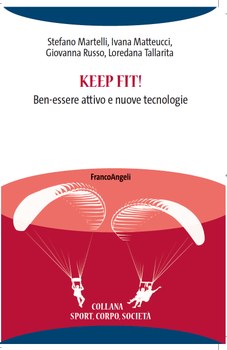
Keep fit! Ben-essere attivo e nuove tecnologie
[FrancoAngeli, Milan 2019, pages 158, with references (168), € 22,00, Series "Sport, Body, Society" n. 16, Publishing number: 1569.16, ISBN: 978-88-917-8886-3]
What is happening in sports culture today? It's evident the passage from the model of competitive sport (based on work ethics, on the efficiency of the body and on the pursuit of the record) to an idea of sport as an expressive practice, as a resource for self-gratification and research of well-being and positive relationships.
The volume collects various researches on the transformations taking place in sports venues. The Authors observe the social and cultural change taking place, with particular attention to the transformations that digital media favor in the field of sport and physical activities. The attempt is to bring out opportunities and risks, generated by the use of digital devices in fitness and wellness practices in the gym, in sports clubs and in open-air group practices.
The contributions presented converge in recognizing that fitness and wellness practices are increasingly social. The use of digital technology proves to have multiple social consequences, functional to the development of advantageous practices to establish positive relations with others and with nature. Keeping fit takes on a range of meanings that cannot be traced back to a simple physical workout, revealing itself as a real cultural and social training, strongly supported by the online platforms. The network society thus captures, connects and enhances post-modern practices and values, which feed millions of sports and physical activity in our country.
Authors:
Stefano Martelli teaches Sociology of cultural and communication processes and Sociology of sport and communication at the "Alma Mater Studiorum" - University of Bologna.
Ivana Matteucci teaches Sport Sociology and Wellness Sociology at the University of Urbino "Carlo Bo".
Giovanna Russo teaches Sociology of wellness and General Sociology at the "Alma Mater Studiorum" - University of Bologna (Rimini branch).
Eugenio Bagnini is Ph.D. in Sociology and Social Research, collaborates with the SportComLab of the "Alma Mater Studiorum" - University of Bologna and is administrator of the Euphoria fitness center in Bologna.
Loredana Tallarita teaches Sociology of sport and health and General Sociology at the University of Enna "Kore".
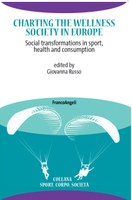
Charting the Wellness Society in Europe.
Social transformations in sport, health and consumption
Editor and Author: Giovanna Russo
Other Authors: Mauro Ferraresi, William Gasparini, Stefano Martelli, Julien Pierre, Andy Smith, Ivan Waddington
Editorial Series: Sport, Corpo, Società
Issues: Sport Sociology, Health sociologia della salute
Pages: 144, year: 2018 (n° 1569.15) - Peer Reviewed Content - ISBN: 9788891781031
Today sport and physical activity are considered cultural resources, which can facilitate a better understanding of the evolution of the contemporary looking for wellness. This book offers pathways in the wellness culture in some European Countries (Italy, France and the United Kingdom), going beyond the concept of active lifestyle, and investigating the relevance of physical activities in order to keep good health.
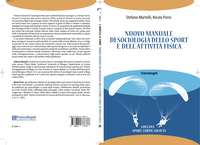
Nuovo manuale di Sociologia dello sport e dell'attività fisica
[di Stefano Martelli e Nicola R. Porro, FrancoAngeli, Milano 2018, pagg. 228, con biblio-sitografia di rif. e 3 indici (288), € 33,00, collana "Sport, Corpo, Società", codice ed.: 1569.7.1, ISBN: 978-88-917-7837-6]
Index
An indispensable tool for all those who want to develop their professionalism in the field of Motor Sciences. The manual provides a solid basis both for making choices in the organization and communication of sporting events, and for implementing policies aimed at the health and leisure of the population.
Presentation of the volume
This book fills a gap in the panorama of Italian sociological studies. Despite some noteworthy attempts, so far in our country a real manual of Sociology of sport and physical activity has not yet appeared. This volume is what it is proposed to be, which offers a summary of the main results obtained by Italian and foreign research in the field, but reread and interpreted within a clearly recognizable theoretical framework and, therefore, likely to stimulate further studies and research .
We therefore intend to offer an indispensable tool for all those who want to develop their professionalism in the field of Motor Sciences. The manual addresses the bearers of a new culture of human movement, which, unlike in the past, today grows less by commenting on the sports events of the day in bars, and much more by looking for empirical regularities and scientific evidence in laboratories and university classrooms. The volume contributes to this ongoing professionalization by offering itself as a solid foundation, both for making choices in the organization and communication of sporting events, and for implementing policies aimed at the health and leisure of the population.
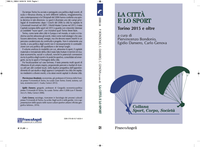
La città e lo sport. Torino 2015 e oltre
[a cura di Piervincenzo Bondonio, Egidio Dansero e Carlo Genova, FrancoAngeli, Milano 2018, pagg. 216, con biblio-sitografia di rif. e nota sugli Autori (231), solo e-book (PDF) per PC, Mac, Tablet € 21,50; collana "Sport, Corpo, Società", codice ed.: 1569.14, ISBN: 978-88-917-6585-7]
In short
The volume analyzes the ways in which, through sport, the material and immaterial capital of the city of Turin has been made fruitful in terms of economic, social and cultural repercussions, as well as the potential consolidated and emerging connections between the politics of events and sports practices, as well as sport and the image of the city. While focusing on the Turin case, the text presents many points for reflection on a wider scale, proposing useful research paths and results for other local contexts.
Presentation of the volume
Turin has long initiated and pursued a policy of events, of different scale and relevance, on different topics (publishing, food and wine, contemporary art) and the 2006 Olympics gave a decisive boost in this direction. Sport has become one of the privileged fields of investment: after the 2006 Games the city hosted the Winter Universiade in 2007, the World Master Games in 2013, it was the European Capital of Sport in 2015 and looks with growing interest at the so-called "new sport ", with initiatives such as Turin Street Style.
Turin, like many other cities in Europe and the world, is nourished and transformed (also) through events, understood as strategic nodes that catalyze attention, resources and energy, but which must be inserted in a path characterized by continuity and project. It is certainly not a novelty, and a policy of events is not necessarily in contradiction with a politics of everyday life and long times.
The volume analyzes the ways in which, through sport, the material and immaterial capital of the city has been made fruitful in terms of economic, social and cultural repercussions, as well as the potential connections both between the policy of events and sports practices, consolidated and emerging, both between sport and the image of the city.
While focusing on the Turin case, the text presents many points for reflection on a broader scale, proposing useful research paths and results for other local contexts, in the dual perspective of deepening case studies and comparative approaches between cities that host them or different events, or between the same events hosted in different cities.
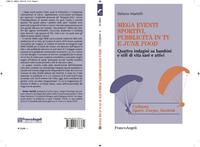
Mega eventi sportivi, pubblicità in tv e junk food. Quattro indagini su bambini e stili di vita sani e attivi
[di Stefano Martelli, FrancoAngeli, Milano 2017, pagg. 147, con appendici (172), € 22,00, collana "Sport, Corpo, Società", codice ed.: 1569.13, ISBN: 978-88-917-6836-0; Giovanna Russo è autrice del cap. 3 e della Nota metodologica].
In short
The 2016 European Football Championships provided the opportunity to carry out a set of sociological research on the indirect effects on the health of minors resulting from exposure to Mega sporting events and junk food television advertising. It has been investigated empirically whether commercial advertising increases the consumption of foods not advisable for health among minors and their families. This in order to trace scientific evidence and better react to the influence of these "hidden persuaders" through educational initiatives in primary schools.
Presentation of the volume
The Mega sporting events (Mes), such as the Olympics and the international soccer championships, represent a privileged opportunity to observe the changes caused by the "Sms triangle", that is the recently emerged interdependence between sport, media and sponsoring companies. For the latter the public of the 'mediated' sport are potential purchasers of goods and services, which they themselves promote with great effectiveness in the "extraordinary" context offered by the Mes. For this reason McDonald's, Coca-Cola, Budweiser and Carlsberg have become the top sponsors of Fifa, Uefa and Ioc: but what are the effects of these obesity Games?
The volume reflects on the unexpected socio-cultural effects of the telemediation of a Mes; the 2016 European Football Championships provided the opportunity to carry out a set of sociological research on the indirect effects on the health of minors, which derive from exposure to the Mes and to junk food television advertising. It has been empirically investigated whether commercial advertising increases or not, among minors and their families, the consumption of foods not advisable for health; this in order to trace scientific evidences and thus be able to better react to the influence of these "hidden persuaders" through educational initiatives in primary schools to healthy and active lifestyles.
The four researches carried out by the SportComLab of the AlmaMater were conducted with an integrated methodology (quantitative-qualitative and visual) on the universe of schoolchildren attending 4th and 5th classes in a municipality of over 30,000 inhabitants of the North-East. The connection between the Mes observed, TV advertising and junk food consumption was ascertained, as it emerged that the Mes, today, are considered by parents as a "planned" party, in which food transgression is effect and, at the same time, cause of the exceptional nature of the mega sporting event.
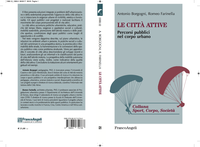
Le Città Attive. Percorsi pubblici nel corpo urbano
[di Antonio Borgogni e Romeo Farinella, FrancoAngeli, Milano 2017, pagg. 139, con bibliografia (152), € 21,00, collana "Sport, Corpo, Società", codice ed.: 1569.12, ISBN: 9788891751768].
In short
The active city combines urban planning, educational policies, leisure time practices, social and cultural needs and expectations, sustainable mobility, promotion of physical activity and sports practices, sharing of public spaces as places of opportunity and conflict. Through the approach of the active city, where the urban needs of liveability, aesthetics and functionality are intertwined, the volume presents integrated solutions to the problems of urbanization and sedentary lifestyle. The public spaces so designed facilitate the movement of the body by promoting active lifestyles.
Presentation of the volume
The book presents integrated solutions to the problems of urbanization and a sedentary lifestyle proposing the approach of the active city in which urban needs of liveability, aesthetics and functionality are intertwined.
Public spaces so designed and built facilitate body movement by promoting active lifestyles.
The active city combines urban planning, educational policies, leisure time practices, social and cultural needs and expectations, sustainable mobility, promotion of physical activity and sports practices, sharing of public spaces as places of opportunity and conflict.
In the text, the relationships between urban environments and people, the social and cultural practices of walking in a historical perspective, the promiscuity and reformability of the roads, the fragmentation and the connections of public space seen as a structural problem are first described in urban terms. The concept of an active city is then examined by describing its recent and future developments, analyzing its informal uses and classifications from the point of view of physical activity. The perspective of autonomous mobility of children is also chosen as an indicator of the quality of the active city. The discussion concludes with some design guidelines and examples.
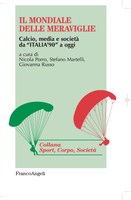
Il Mondiale delle meraviglie. Calcio, media e società da "Italia '90" a oggi
[a cura di Nicola R. Porro, Stefano Martelli e Giovanna Russo, FrancoAngeli, Milano 2016, pagg. 146, con bibliografia (156), € 21,00, collana "Sport, Corpo, Società", codice ed.: 1569.10, ISBN: 978-88-917-4234-6].
In short
Taking its cue from the last mega-football event held in our country, Italy '90, the volume aims to highlight the profound economic and cultural changes that have taken place in the last three decades in the "most beautiful game in the world", but also in the whole society , national and global. To confirm that football is a real "total social fact", able to reveal, like a litmus test, the complex plot of the emerging society.
Presentation of the volume
"ITALIA '90" was the last mega-football event held in our country. Since then a quarter of a century has passed: for some it is a more or less faded memory, for others, the younger ones, not even that. Why, then, talk about it? And why call it the "World of Wonders"?
Here we are not only referring to the magical nights sung by Gianna Nannini: we want instead to highlight the profound economic and cultural transformations that have recently taken place in the "most beautiful game in the world", but also in the entire national and global society.
That World Championship was indeed the occasion for the emergence of an unprecedented social configuration: the "SMS triangle", which, by linking sports, media and sponsoring companies closely, from then until today and to more and more abundantly generates resources and makes Fifa football the global show for the television entertainment of billions of people, and for the promotion of goods and services in equally vast markets.
The contributions collected here test the relational theory of society from different points of view, delving into the relationships that structure the "SMS triangle", verifying the links with the entire Italian and global society up to the present, and trying to predict the future of football in the society of telematic networks. To confirm that football is a real "total social fact", able to reveal, like a litmus test, the complex plot of the emerging society.
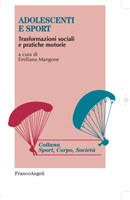
Adolescenti e sport. Trasformazioni sociali e pratiche motorie
[a cura di Emiliana Mangone, FrancoAngeli, Milano 2016, pagg. 170, bibliografia ai capitoli, € 22,00, collana "Sport, Corpo, Società", codice ed.: 1569.11, ISBN: 978-88-917-4244-5].
In short
The relationship between sport and society today represents an emerging theme in the social sciences and the multidimensionality of the phenomenon directs towards the recomposition of the different disciplinary perspectives. The book deals with sports from the different points of view of the disciplines, focusing once on the relationship between society and sports practice and once on the educational value of this or its function of national identification and prevention of violence also and through the active sports policies.
Presentation of the volume
Sport, although in this volume it will be preferred to talk more about physical practices, is configured as a socio-cultural system to which little or little relevance has been attributed for too long. This especially if it is also considered as a value and ethical universe with a high educational and training content, which has the task of orienting not only the sporting activity but also the social action of every single practitioner who joins it.
The relationship between sport and society today represents an emerging theme in the social sciences and the multidimensionality of the phenomenon directs towards the recomposition of the different disciplinary perspectives.
This is necessary because, since sport is a representation of society, it has relations of relationship with the entire social system and with the multiple spheres that compose it. The social transformations that are registered in society are consequently reflected in sporting practice and vice versa.
For these reasons, in the first part of the volume motor practices are observed from different scientific-disciplinary points of view, focusing on the relationship between sport and society, its educational value, the function of national identification and prevention of violence, also and through active sports policies.
In the second part we present the results of a research conducted in the Campania region on a statistically representative sample of schooled adolescents, who are confronted with sport and physical activity.
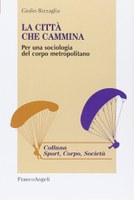
La città che cammina. Per una sociologia del corpo metropolitano
[Di Giulio Bizzaglia, FrancoAngeli, Milano, 2014, pagg. 125 (con bibliografia pagg. 140), Euro 17,00, Collana Sport, Corpo, Società, cod. ed. 1569.9, ISBN: 978-88-917-051-29]
In short
The walkability of the city, its usability through the journey, is a resource available for urban reconsideration made necessary by the great crisis, knowing that there will not be a return to the past but a collective social development. In this perspective, research with the Delphi technique reported in the book stems from the belief that walking in the city is an exercise in freedom for everyone.
Presentation of the volume
Walking is worthwhile. This book aims to explain why. It is worthwhile from many points of view: it is a respectable physical activity, promotes relationships, enlivens the city, contributes to solving traffic and pollution, increases the safety of citizens, realizes the right to wider citizenship, paves the way to introspection, allows the best knowledge of the environment and of oneself, generates health.
Walking is the right measure, the parameter to define the degree of attention that the city dedicates to people, administration to the citizens, politics to the polis and to the community. It is a high goal, a reference horizon; a vast, ambitious yet obligatory program if we want to redefine the ways of experiencing the city in terms of sustainability, environmental and civil. Finally, it also accepts the principle of the sustainability of motor practice in relation to the body, to people in their state, in the different seasons of their existence. Thus, the connection between the urban environment, sociality, subjectivity and the configuration of a syncretic perspective is highlighted. Around the metropolitan body there is a considerable challenge for the social sciences and the culture of movement.
Walkability, or the usability of the city through the journey, is a resource available for urban regeneration made necessary by the great crisis, in the awareness that a return to the past is not possible, nor will it ever be. From the crisis we will emerge developing society, human beings, institutions: all together. In this perspective, the research reported in the volume - carried out with the Delphi technique - stems from the belief that walking in the city is an authentic exercise of freedom, for everyone.
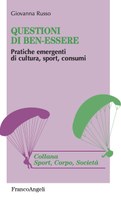
Questioni di ben-essere. Pratiche emergenti di cultura, sport, consumi
[di Giovanna Russo, FrancoAngeli, Milano, 2014, pagg. 125 (bibliografia pagg. 142), Euro 17,00, Collana Sport, Corpo, Società, cod. ed. 1569.8, ISBN: 978-88-204-5675-7]
In short
Today sport is above all a cultural fact, so much so that it is considered one of the prevailing interpretative frames of contemporary symbolic practices. The book investigates some aspects of current cultural production and proposes re-reading sport as a relational and emerging phenomenon of a society seeking a better, healthier, active and socially participated quality of life.
Presentation of the volume
What can a book, a film, a concert share in the use of the Paralympic Games, the emergence of the wellness phenomenon or the multiplication of physical-motor activities aimed at wellness?
What links these elements at first sight to each other is the reference to a common denominator: they are all practices of a cultural life increasingly contaminated by the sporting experience, so much so as to invade the daily newspaper, the press, the media, public policies and to attract the attention of the social sciences. Sport expresses in fact a strong attractiveness at the micro and macro social level, revealing itself as a multi-faceted phenomenon: a place of escape and consumption, but also a space for socialization, education, identity empowerment, model of relationships and symbolic field of social action . But today sport is above all a cultural fact: the progressive expansion of the concept of culture has included it in this sphere, so much so that it can be considered one of the prevailing interpretative frames of contemporary symbolic practices. What then produces an increasingly "sportivized" culture? What representations, identities and practices are associated with it?
Starting from these questions, the volume investigates some aspects of the current cultural production and proposes re-reading sport as a relational circuit and as an emerging phenomenon of a society aimed at the search for well-being. For a better quality of life: healthier, active and socially shared.
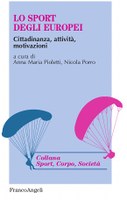
Lo sport degli europei. Cittadinanza, attività, motivazioni
[a cura di Anna Maria Pioletti, Nicola R. Porro, Franco Angeli, Milano, 2013, pagg. 221 (con bibliografia 238), euro 31,00, Collana Sport, Corpo, Società, cod. ed. 1569.6, ISBN: 978-88-204-4018-3].
In short
In a perspective of international comparison and interdisciplinary cooperation, the volume does not focus only on the traditional expressions of institutional sport in the context of a European community, but calls into question welfare policies and strategies for active citizenship developed by the countries of the Union, in the belief that sport is a potential tool for social inclusion.
Presentation of the volume
Sport and physical-motor activity constitute a powerful sensor of cultural change and together represent an emerging right of citizenship.
The research illustrated in the volume does not therefore focus exclusively on the traditional expressions of institutional sport (Olympic committees, federations, specialty networks on a national or international scale) in the context of a European community. On the contrary, in a perspective of international comparison and interdisciplinary cooperation, it calls into question the welfare policies and strategies for active citizenship developed by the Union and the countries that are part of it.
The survey thus proposes an updated map of the various actors involved: collective action movements and Olympic institutions, national governments and local authorities, commercial entrepreneurs and non-profit organizations. In fact, the European sports system is a complex and even contradictory phenomenon: a mosaic of experiences, cultures, needs and expectations.
The sport of high performance, the main spectacle of mass entertainment, global business and great narrative of post-modernity, seeks a controversial coexistence with the sport of rights, a potential tool for social inclusion. A dialectic emerges, often conflicting and with uncertain outcomes, and a stimulating key to understanding Europe in one of its most critical seasons.
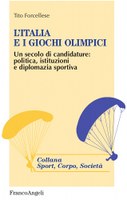
L'Italia e i Giochi Olimpici. Un secolo di candidature: politica, istituzioni e diplomazia sportiva
[Di Tito Forcellese, Franco Angeli, Milano, 2013, pagg. 259 (con bibliografia 270), euro 34,00, Collana Sport, Corpo, Società; cod. ed. 1569.5, ISBN: 978-88-204-2262-2].
In short
The history of the nominations of Rome, Cortina d'Ampezzo and other Italian cities at the Olympics (from 1908-2012) reconstructed through documents that are difficult to access, such as those kept in the IOC archive in Geneva. In light of some figures representing the Italian sporting leadership, capable of gaining credibility in the international Olympic context.
Presentation of the volume
Rome 2020 highlighted the complex political and diplomatic dynamics that revolve around international sports institutions. For the first time the volume reconstructs the history of Italian candidates for the Olympics, using multiple sources, including unpublished documents of the IOC in Lausanne.
The nominations cover a period of over a century (1908-2012), touching on moments of national history that are different from each other, sometimes crucial. The liberal age recorded clumsy and unsuccessful attempts, so much so that the project of Baron de Coubertin, that of holding the 1908 Games in Rome, was not realized. In the first post-war period, in the face of a high commitment of fascism in favor of sport in the perspective of the mass adhesion of the Italians to the regime, Mussolini preferred to cede the hospitality of the 1940 Games to Tokyo, then canceled due to the Second World War. Finally, the years of republican democracy were characterized by the reconstructive work of the political and sporting leadership, which culminated with the assignment of the Winter Games in Cortina d'Ampezzo (1956) and the summer ones in Rome (1960).
From this original perspective corner, in which the city of Rome is always the catalyst for national political dynamics, some representative figures of Italian sporting leadership can be observed, capable of weaving fruitful diplomatic networks and gaining credibility in the international Olympic context. The centuries-old story of the Olympic candidates brings out this complex relationship between the not always universal aspirations of capital Rome and the particularistic impulses present in the young Italian state, cyclically grappling with the search for shared structures.
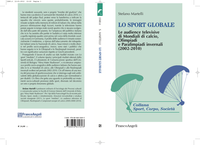
Lo sport globale. Le audience televisive di Mondiali di calcio, Olimpiadi e Paralimpiadi invernali (2002-2010)
[di Stefano Martelli, Franco Angeli, Milano, 2012, pagg. 185 (con bibliografia finale pagg. 205), Euro 24,00, Collana Sport, Corpo, Società, cod. ed. 1569.4, ISBN: 978-88-568-4569-3].
In short
The volume reconstructs the breadth and socio-demographic profile of the Italian audiences who watched on TV at the World Cup, the Olympics and the Winter Paralympics in the period 2002-2010. Starting from a theory of the process of sportization that questions the ambivalent outcomes of the globalization of football and athletics for able-bodied and disabled people, the book takes an in-depth look at the social changes promoted by sport, a true global social phenomenon.
Presentation of the volume
The vuvuzela stunners, veritable "judgment trumpets" that made cacophonous the surround of the 2010 World Cup, and the tentacles of the octopus Paul, stretched out towards the flag to indicate the team that will win: these are probably the images that have remained carved in the memory of millions of Italians who, disappointed by the early elimination of the Azzurri, were able to watch sporting events that were taking place on the other side of the planet in real time.
If the size of the Italian audience that watched the games in South Africa on TV was much lower than the one recorded four years earlier during the triumphant blue ride in Germany, the audience profile remained substantially the same, as proof of the attachment of Italian viewers towards the national football team. Very minor and very different in the socio-registry profile, on the other hand, it was the publics who watched the Winter Olympics and Paralympics on TV, with significant changes compared to the previous Games.
Continuing the analysis work on Auditel data started with the sport "mediated", the volume reports the main results obtained by the SportComLab, the Sports Communication Laboratory of the University of Bologna "Alma Mater Studiorum", and reconstructs breadth and socio-registry profile of the Italian audiences that have watched on TV at the Olympic Games and at the Winter Paralympics held in the period 2002-2010. This is part of a theory of the process of sporting which questions the ambivalent outcomes of the globalization of football and athletics for able-bodied and disabled people.
A book that takes an in-depth look at the socio-cultural changes promoted by sport, which has become a real global phenomenon in the decade.
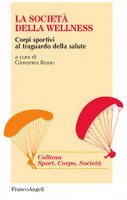
La società della wellness. Corpi sportivi al traguardo della salute
[a cura di Giovanna Russo, Franco Angeli, Milano, 2011, pagg. 142 (con bibliografia 153), Collana Sport, Corpo, Società, euro 18,00, cod. ed. 1569.3, ISBN: 978-88-568-4438-2].
In short
The volume investigates the relationship between wellness, body and motor activities with the aim of bringing out challenges and complexity of an approach to well-being that conceives sport as a "relational platform" for individuals, as well as a strategic place for individual identity and its changes.
Presentation of the volume
In recent decades, the physical and mental well-being of the population has become one of the primary objectives of "advanced" societies; how this imperative can then be translated into practice is the crux of the contemporary debate. Wellness goes beyond active lifestyle, understood as regular physical activity, healthy eating and a positive approach to things, because it emphasizes the importance of motor and sports activities in order to stay healthy.
The volume investigates the relationship between wellness, body and motor activities with the aim of bringing out challenges and complexity of an approach to well-being that conceives sport as a "relational platform" for individuals, as well as a strategic place for individual identity and its changes. But not only. The concept of well-being conveyed by physical-motor activities opens up in the "post" -modernity to a plurality of meanings aimed at the search for a better life value through healthy life paths that equally concern the individual, the community and the environment.
Empirical analyzes and theoretical reflections presented here lead us to interpret wellness according to a concept that includes knowledge and actions of "well-being" (well-being), oriented towards "good practices" (well-doing) and beyond the instrumentality of doing: wellness as part of the good life project.
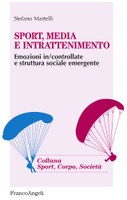
Sport, media e intrattenimento. Emozioni in/controllate e struttura sociale emergente
[di Stefano Martelli, Franco Angeli, Milano, 2011, pagg. 179 (con bibliografia 189), Collana Sport, Corpo, Società, euro 22,00, cod. ed. 1569.2, ISBN: 978-88-568-4424-5].
In short
The volume emphasizes the emerging social structure that in recent years has linked sports, media and sponsoring companies into a "virtuous" circuit: it involves an audience, composed at the same time of sportsmen, viewers and consumers, to whom entertainments are offered that have a growing social, economic and political relevance.
Presentation of the volume
Norbert Elias in the early writings of Sociology of sport had already shown an acute perception of the fruitful and pleasant consequences that derive from the "controlled absence of control", which sport allows protected but bored inhabitants of modern societies. In the stadiums it is possible to express emotions and passions in picturesque and noisy ways, while these are usually repressed in other occasions of social life, highly rationalized and routinized. But in the 1960s, when Elias had worked out his vision of the civilization process, the sport-show had not yet established itself, nor had a global alliance established between it, the television and the sponsoring companies of major sporting events.
The volume emphasizes the emerging social structure, which in recent years has linked sports, media and sponsoring companies into a "virtuous" circuit: it involves an audience, composed at the same time of sportsmen, viewers and consumers, to which are offered entertainments that have a growing social, economic and political relevance. Theoretical reflections and analysis of the data collected by Istat during the three national surveys on sport, media and leisure (1995, 2000, 2006) allow Elias and Dunning to reflect on the sport and the civilization process in the Italian context. In particular, there are doubts about the fact that these socio-cultural developments have given rise to a positive model of internal control and self-regulation; instead, we are witnessing different behaviors, some of which raise serious questions about the future of society in the "post"-modern phase.
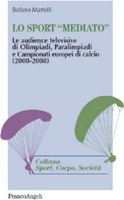
Lo sport "mediato". Le audience televisive di Olimpiadi, Paralimpiadi e Campionati europei di calcio (2000-2008)
[Di Stefano Martelli, con la collaborazione di P. Dell'Aquila, Ivo S. Germano, G. Russo, Franco Angeli, Milano, 2010, pagg. 188 (con bibliografia 2016), euro 23,00, Collana Sport, Corpo, Società, cod. ed. 1569.1, ISBN: 978-88-568-1726-3].
In short
For the first time in our country, we can discuss data on the Italian audiences of the Olympics, Paralympics and European Football Championships in the early years of the new millennium (2000-2008). Comparisons and quantitative trends are placed within a broader framework, which describes sociologically what a mega sporting event is and which communicative processes make it possible.
Presentation of the volume
Every day you can watch football games or sports competitions on TV, which television globalization allows you to receive from even very distant countries. Numerous thematic channels, specializing in sporting events, are able to feed passions and encourage consumption, which become the source of unprecedented multiple memberships to global fans, while each sporting event claims to be "big".
What then is the criterion for distinguishing one mega sporting event from another that is not? And by whom are these immense audiences composed, who remain invisible to the athletes in the race but who nevertheless ensure them the chance to compete? In fact it is now clear to everyone that, without the television audiences, and without the rich broadcasting rights paid by the television companies to the Olympic Committee or to the football game Federations, the big international tournaments could not take place.
So far the breadth and characteristics of these audiences have been reserved for advertising studios and companies sponsoring major sporting events. This book for the first time in our country presents data on the Italian audiences of the Olympics, Paralympics and European Football Championships in the early years of the new millennium (2000-2008). Quantitative comparisons and trends are then placed within a broader framework, which sociologically describes what a mega sporting event is and which communicative processes make it possible.